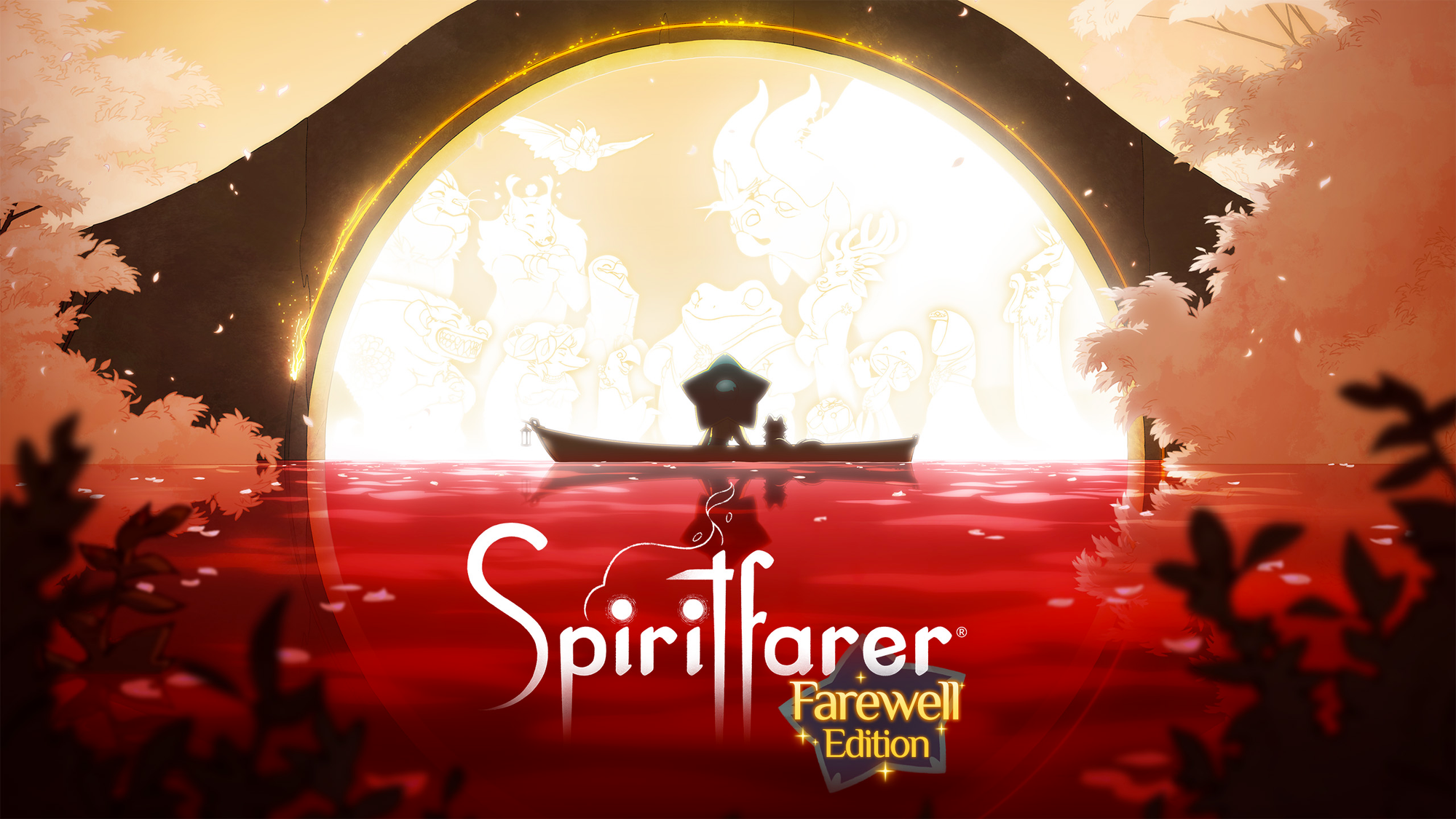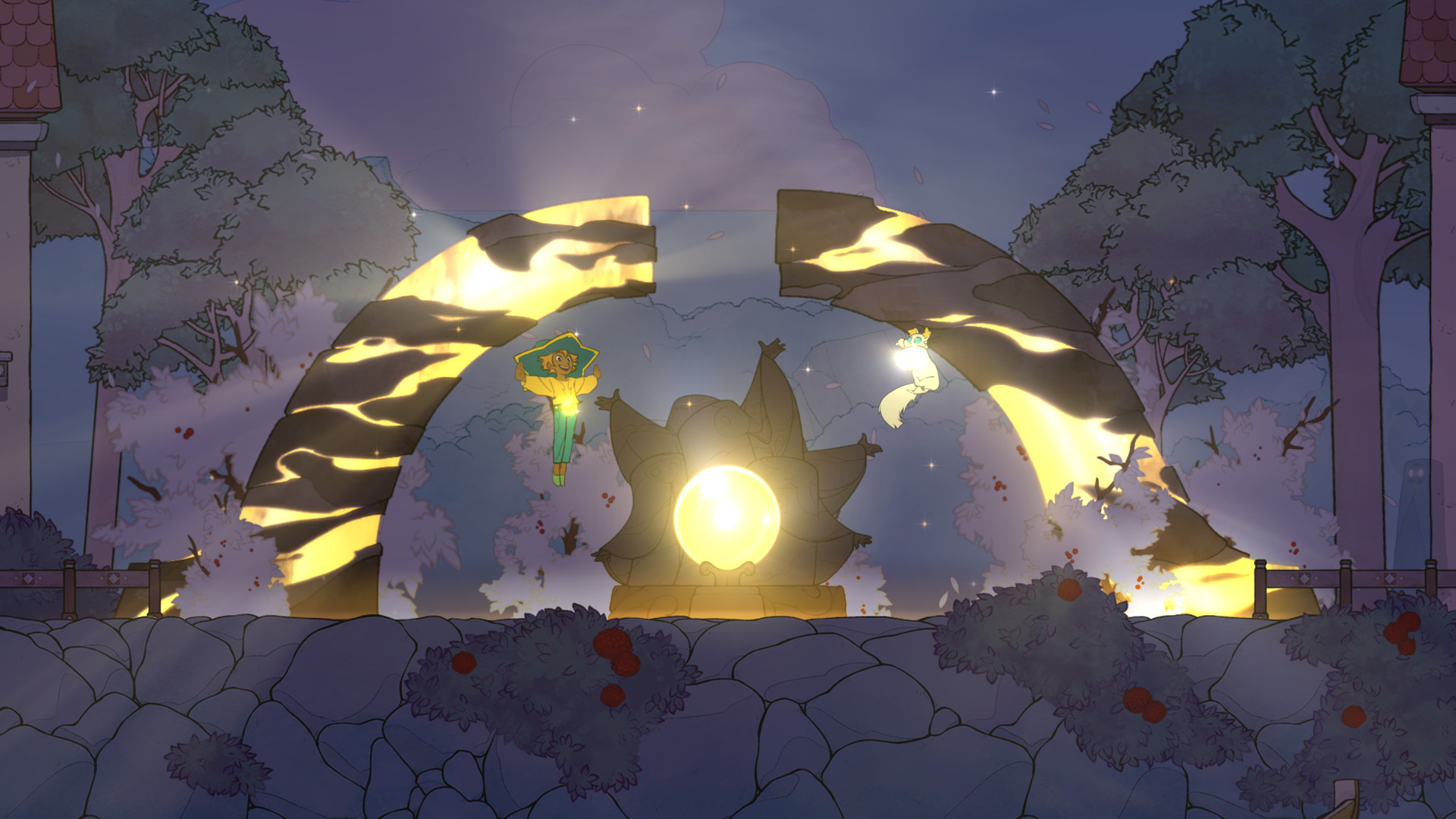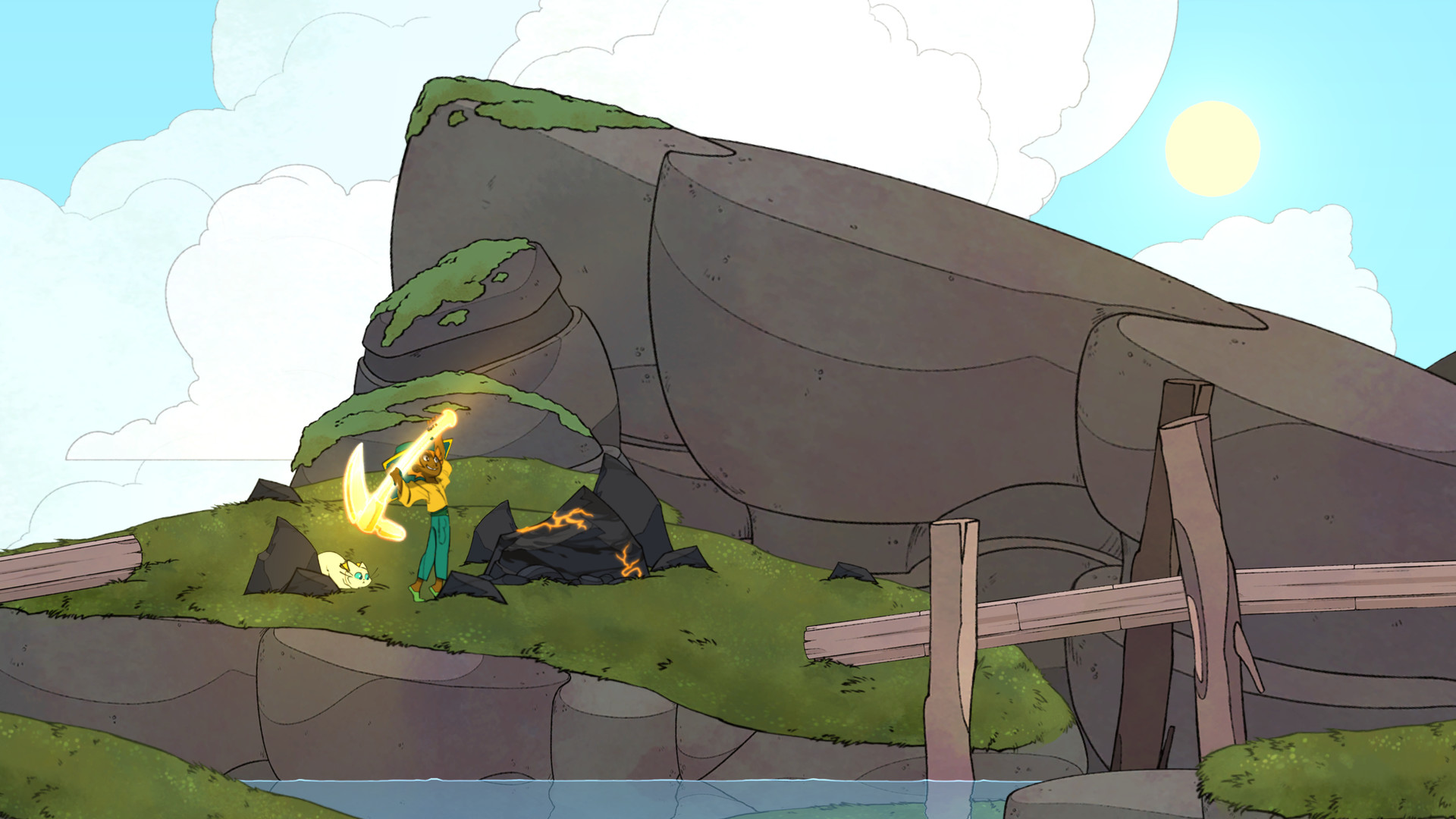The Economy of Accepting Death in Spiritfarer
How game systems enable introspective and emotional experiences

Thunder Lotus' Spiritfarer is a truly unique game. That is not only due to its innovative blend of styles and gameplay mechanics but because of its central message: accepting death.
In Spiritfarer, the player takes the role of Stella, a ferry master for spirits in a sort of afterlife ocean. Each spirit has its own story and memories shared and played with Stella as they come to terms with their own passing. As they feel ready, the spirit is then taken by the Evedoor, where they meet their final rest.
But as much as the spirits accept their fate, part of the game is also bearing the player's endorsement. It asks whether you, impersonating Stella, will follow the necessary steps to help the spirit cross the Everdoor.
It is a two-way road in which death's acceptance comes in the form of the game's system but also from the humane side of the experience: the player.
In this piece, we discuss how Spiritfarer achieves such a feat by using its game system in unique ways, driving the player into narrative-leaden economy mechanisms to discuss such a ubiquitous, but at the same time ignored, aspect of life and games: dying.

A Game's Mind, Body, and Soul
One of the common comparisons and analogies critics have towards Spiritfarer is with other farm-sim games, like Stardew Valley and Animal Crossing, due to its sort of town-management system, which happens on top of the player's ship. This comparison is quite spot on.
Yet, one could argue that there is a crucial difference between these games. Spiritfarer's management system acts more as a support system that unlocks explorations and drives the story rather than a central element in the game.
Notably, this is quite an interesting use of the game economy for the genre. Generally, "similar" games have the management part, including gathering, processing, and selling resources, as the central gameplay aspect and even the principal motive for engaging players. In Spiritfarer, that is not really the case, as the game is mainly played in a sort of 2D action platformer style, in which the player traverses and explores scenarios by jumping and interacting with level design elements.
Still, I argue that the main gameplay element in Spiritfarer is neither the management nor the platforming aspect, but the story and dialogues. The primary drive for playing the game is meeting and interacting with the spirits that board the ship. It is getting to know their stories and helping them process their feelings, getting to terms with their past, and moving on. Moreover, it is figuring out, based on what they share, what and who they truly are (or were).
The game's platformer aspect is its physical body, the management system is the mind, and the game's soul is its narrative.

The Spirit's Economy
The narrative of Spiritfarer is not light, nor holds the player by the hand. It often hides its meanings and uses analogies to approach sensitive topics, such as life-threatening diseases and other forms of illnesses.
Moreover, some characters, like Alice and Stanley, do not plainly explain their arrival or their background, leaving some space for the player to figure out what was left between the lines.
The game intentionally removes these elements so they happen only in the player's mind as a narrative puzzle that influences the gameplay experience. As much as we grow fond and care for them, it is part of the game, and now as a core element of the game's system, to let them go through the Evedoor to proceed.
Seen through a game economy perspective, as the player engages with the spirits, new skills, resources, and events are unlocked, which expands the range of options for both the 2D platform and the management systems.
For example, Gwen is the first spirit to join the boat, which unlocks the Jellyfish event. During the event, the player collects Bright Jelly, which is used as a resource to build the Kitchen and to improve other parts of the ship, such as the Loom. The event is also an interesting platforming challenge with stunning visuals and music.
The uses and outcomes of the bright jelly resource are limited, though, and to progress further, the player must unlock other resources and engage in new events. That is an expected form of a game design gate in management systems. However, the primary resource needed to unlock new areas is the Spirit Flower, used to expand the ship's capacity to fare into new seas of the afterlife ocean.
As you might have guessed, Spirit Flowers are only acquired when a spirit crosses the Everdoor, and each Spirit Flower is unique, representing the character that just moved on. Gwen, for example, leaves behind an Asphodelus flower.
This gameplay loop is described in the diagram below:

The purple boxes are the economy-related events, such as acquiring resources and unlocking upgrades. The yellow boxes are the narrative-related events that involve both the dialogues and cutscenes in the game and the reflective and personal player experience, such as learning and bonding with the spirit.
Notice that these steps are intercalated, emphasizing the importance of each other and moving the player toward the next step. Moreover, this gameplay loop is also a feedback loop: it strengthens and repeats itself as it is performed. New spirits are found as new content is unlocked with the resources and upgrades, restarting the cycle on its own terms.
However, from the spirit's point of view, there is no cycle. After crossing the Everdoor, the spirit remains a constellation in the player's memory (and the game's sky). For the player, the process repeats, but on its terms. It is systemically cyclical, but experience-wise, each spirit represents a new journey.

The Absence of Death
Even though Spiritfarer's central gameplay loop and story revolves around death, the game has a complete absence of it in most of its forms. There are no enemies to be defeated or destroyed, and there is no way to be beaten or perish as Stella. Nevertheless, the peaceful gameplay does not mean it is boring or stale.
As stated before, most of the adventures in the game are played in the form of a 2D platformer, which needs reflexes, good timing, and precision to overcome. In common sense, there are no "attacks" in the game, but Stella learns abilities like activating a light burst or using a spiritual pickaxe to break ores. Those skills are used creatively to "mimic" more action-oriented games but are always shown as pacifistic and good-intended activities.
Later in the game, for example, one spirit unlocks the Dragon Event, in which the player must heal the dragon by mining the ores on its body. While mining, the dragon moves around, getting underwater and surfacing parts of its body, which forces the player to move and jump around to get to the following veins. Making mistakes or taking too long to perform the necessary actions trigger a new submersion, which changes the placement of the targets.
In a sense, the Dragon event even feels like a boss fight, including the soundtrack and tension, but rather than killing the dragon, we are healing it.
As much as the Dragon event acts like an active and engaging 2D platformer event, it has a solid narrative structure. Healing, instead of killing, reinforces the game's message and rejects a common trope in video games. The actors: the spirit, and the player are journeying through reflection and understanding. There is no space for violence, even if from a naive perspective, it can feel empowering.

Moreover, it raises the question of the ubiquitous presence of violence in video games. It poses a challenge to think about games that do not have it or that deal with death in aspects that are not only ways to strengthen the player.
More importantly, games like Spiritfarer show that making excellent and meaningful games is possible without resorting to violence. Even more interesting when it does so by focusing on their side-effect, discussing death as a meaningful life event that needs to be reflected on, not only as a means to an end. The game does so by using its tools and systems to engage the player in this reflection.
That ties nicely with Anna Anthropy's definition of what a game is and what it is suitable for in her excellent book, Rise of the Videogame Zinesters:
A game is an experience created by rules.
Anthropy discusses that games are great in allowing players to experience events by living through them by employing rules and systems.
The Spiritflower resource cycle that prevents the player's progress is an excellent example of it. To advance, death has to be accepted but not conquered. And death is only the end for those who died. The remaining ones carry their marks onward, not as scars but as memories, stars, and flowers.
At the doors of death, presented as the Everdoor in Spiritfarer, there is no fighting, only repentance and acceptance. No force can change our fate; we are only mortal, but our memories, impacts, and games can live on.
